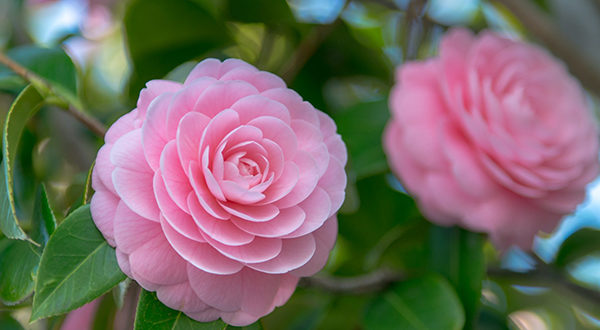Common Name: Camellia
Scientific Name: Camellia japonica
Type of Plant: Shrub
Description: Camellias have been a part of the southern landscape for almost 200 years. They are native to Asia and were introduced into the U.S. near Charleston, South Carolina in 1786. Camellias flower in the fall and winter when their display of colorful blooms is most appreciated. During the remainder of the year their evergreen foliage, interesting shapes and textures, and relatively slow growth make camellias excellent landscape plants.
Mature Size: 6′ tall x 6′ wide.
Blooms: Fall, Winter
Fruit: No
Climate Requirements: Most camellias will perform best if you plant them in a sheltered location where they receive partial shade. Camellias should be planted in a well-drained, preferably acidic soil and be watered regularly for the first year until they’re established. After that can typically survive on rainfall alone, though they’ll perform better if irrigated during dry spells.
Care Requirements: Any pruning should be done before late summer when the flower buds form.
Spacing: Space plants 36-48″ apart
Water Needs: Average
Maintenance: Low
Special Uses/Attributes: Camellias are tough, evergreen shrubs. If planted and cared for properly, they rarely develop serious disease problems, but they can be bothered by a few pests including tea scale, aphids, and spider mites. Camellias are generally considered to be deer-resistant.
Florida Native: No

